On 6 August 1936, six of the He 51s were delivered to Spain to fight in the Spanish Civil War. Initial operations were successful, the Heinkels meeting and defeating a number of older biplane designs, with two Nieuport Ni-52 fighters, a Breguet 19 and a Potez 54 destroyed on 18 August 1936, the first day of operations by Spanish flown He 51s. Deliveries continued as the hostilities increased, with two Nationalist squadrons equipped by November, and the Legion Condor (Condor Legion) forming three squadrons of 12 aircraft each manned by German "Volunteers".
This time of superiority was short lived, with the arrival of large numbers of modern aircraft from the Soviet Union, including the Polikarpov I-15 biplane and new Polikarpov I-16 monoplane, together with the Tupolev SB bomber, which was 110 kph (70 mph) faster. The He 51 proved unable to protect the Legion Kondor's bombers, forcing it to switch to night operations, while also unable to intercept the much faster SB. The He 51 was therefore withdrawn from fighter duty and relegated to the ground attack role by both the Legion Condor and the Spanish Nationalists, It was replaced in the fighter role by the Fiat CR.32 in the Nationalist Air Force, with the Legion Condor receiving Messerschmitt Bf 109s from April 1937 to allow it to operate successfully in fighter operations.
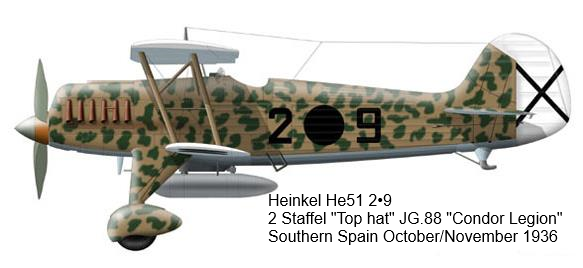
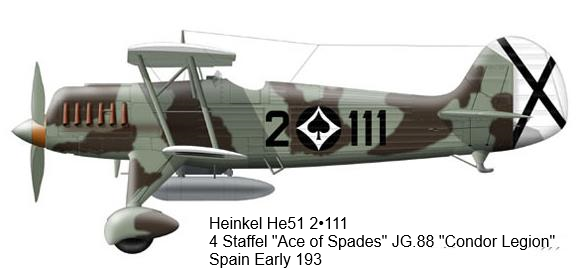
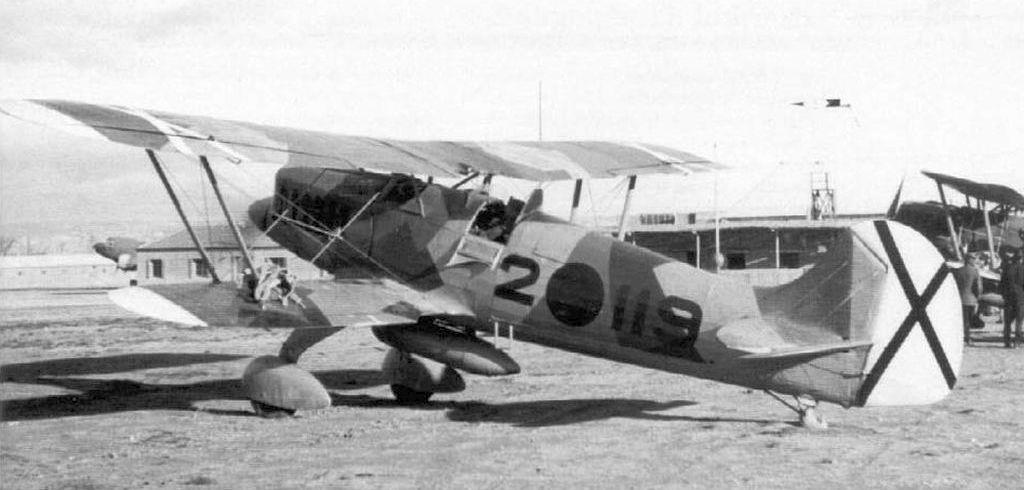
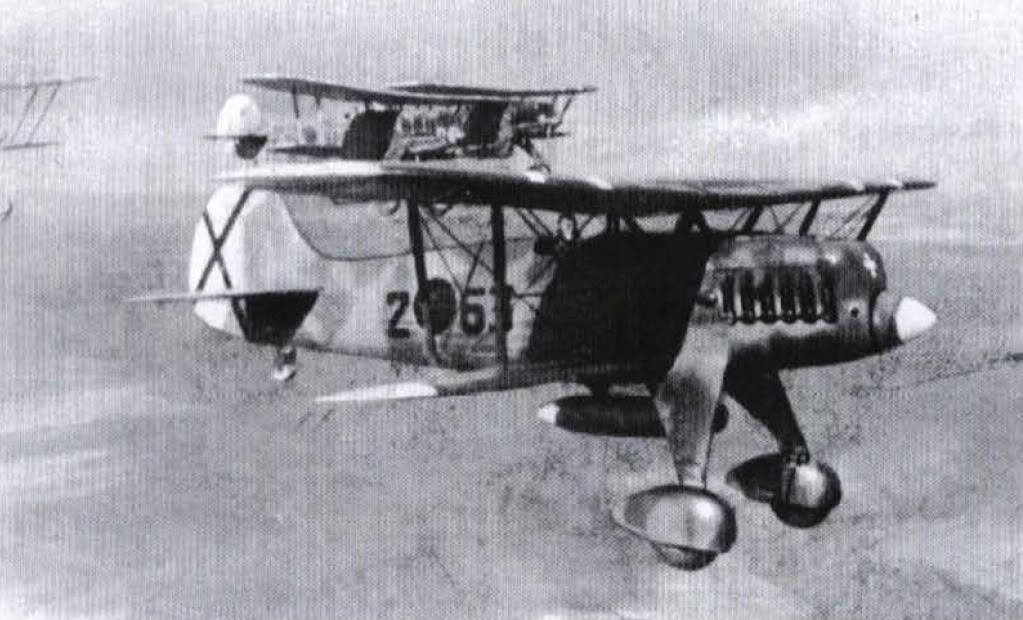
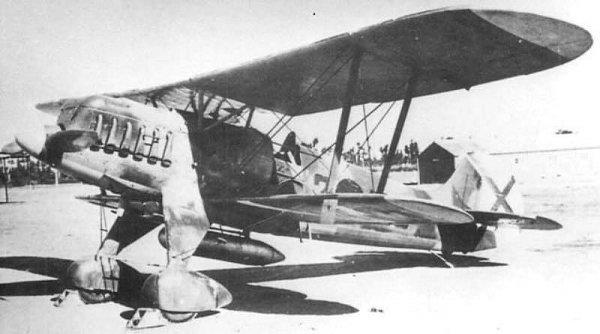
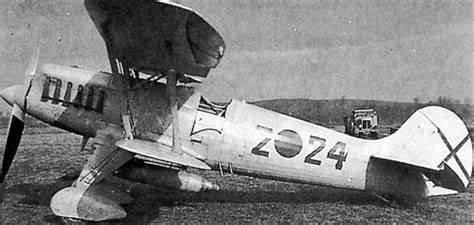
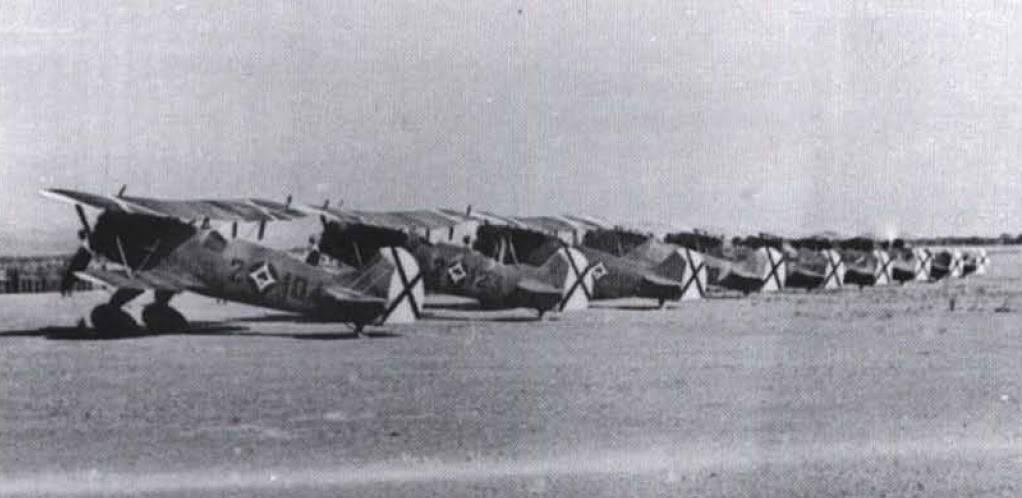
A few days after the Uprising, on July 25, 1936, the Spanish captain Arranz, sent by General Franco with the mission of obtaining military aircraft, traveled to Berlin. After arduous negotiations, he managed to send twenty Junker Ju-52s and six Heinkel He-51 fighters, which landed in Spain on 6 August. This aircraft, which was the symbol of the resurgence of the Reich Air Arm was also the last fighter biplane manufactured in Germany. It flew for the first time, as a test prototype, in the summer of 1933 and after the relevant evaluations was assigned to equip the fighter formations of the new Luftwaffe, entering service the serial model He-51A-1 in April 1935 with von Richthofen's II Fighter Squadron.
The He-51 was a biplane with uneven wings, of mixed construction of welded steel tubes and wooden structure, covered with fabric and removable aluminum plates. The upper wing mounted the ailerons and the lower wing the flaps. Its engine was the sporty BMW VI 12-cylinder V-cooled liquid-cooled, which developed 750 hp and drove a wooden two-bladed propeller, allowing it to achieve a top speed of 330 km/h. with a range of 570 and an operating ceiling of 7,000 meters. It was a large aircraft, measuring 10.99 metres in wingspan, 8.43 in length and 3.20 in height with a take-off weight of 1,990 kg.
It was armed with two 7.7-millimetre MG-l 7 machine guns on the bonnet, equipped with 1,000 rounds, and also had bomb launchers on the planes with a total load of 6 10-kilometre bombs.
The first six Heinkels, painted with the original pearl grey, were used exhaustingly on all the extensive and demanding fronts of the first months, with German and Spanish pilots alternating at the controls. They faced the numerous Spanish Nieuport-52s and the varied French material superbly piloted by Spaniards, as well as by English, French, American and Mexican mercenaries.
Although the Heinkel He-51 was a very aerobatic aircraft, it proved incapable of fighting on equal terms with many of the opposing aircraft and when the Soviet material arrived, its inferiority became much more evident. Joaquín García Morato, who was the first to achieve a victory with a He-5l when he shot down a Potez-54 on August 28, 1936, gives an account in his "Memoirs" how much it cost him to get away from the attack on the tail of a Loire on the Badajoz front, being very disappointed, as he thinks that the He-51 was almost nothing better than the Nieuport-52. manufactured more than ten years earlier.
Despite this inferiority, they continued to fight and when the German Condor Legion arrived, the He-51 was part of four fighter squadrons in Group 88, although at the end of March 1937 they began to be replaced by the Messerschmitt Bf 109 monoplanes, moving on to the Spanish chain units, a mode of combat against ground troops devised in Spain and of devastating efficiency.
The total number of Heinkel He-51s flown in the Spanish skies was 135 units.






